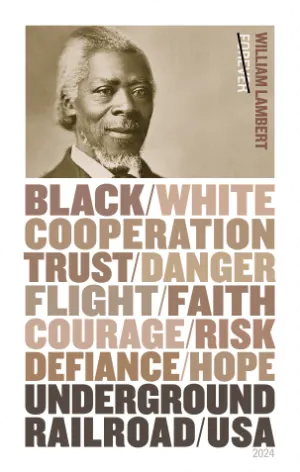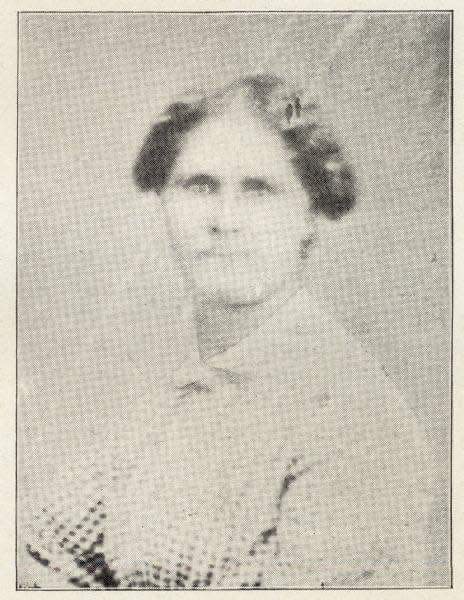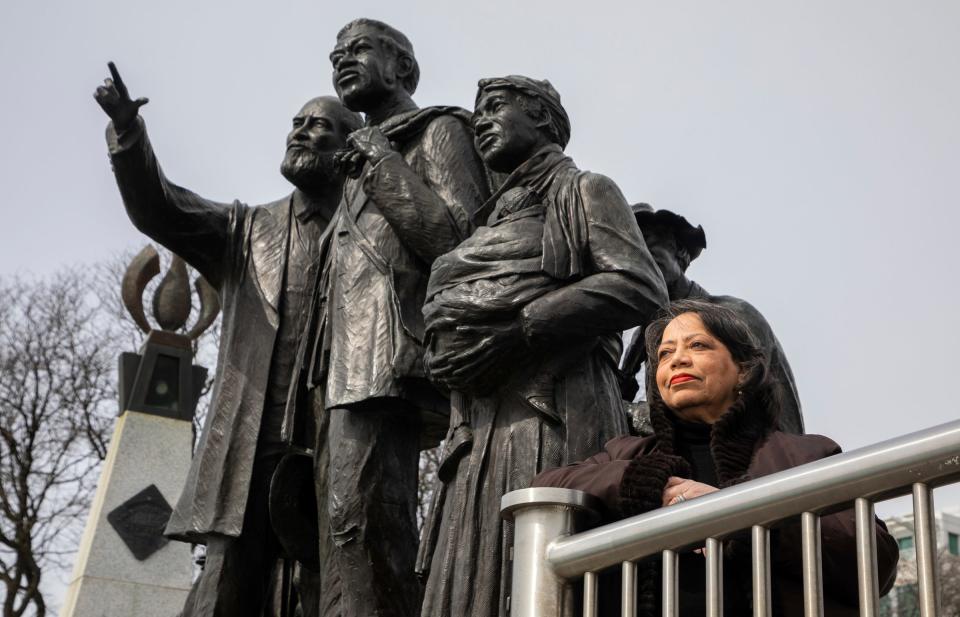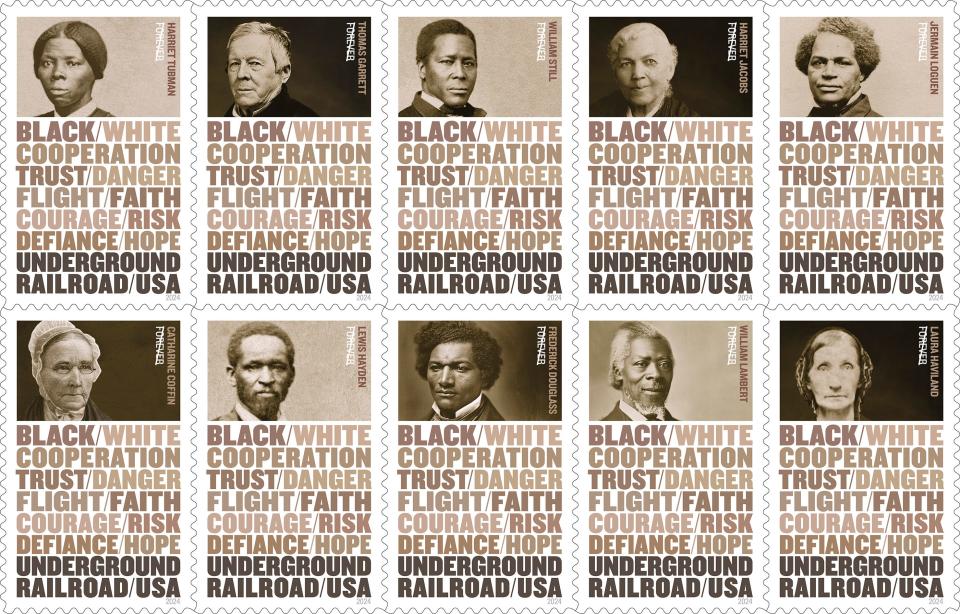USPS unveils new forever stamps honoring Underground Railroad Heroes
William Lambert, a pivotal organizer of Detroit's role in the Underground Railroad, helped free thousands of enslaved people.
He's one of 10 men and women the U.S. Postal Service is honoring on its Forever stamps, recognizing those who guided enslaved people to freedom through the secret network of routes and safehouses before the Civil War. A ceremony is slated to take place Saturday at the historic St. Matthew’s and St. Joseph’s Episcopal Church in Detroit, which has ties to Lambert.
Historians estimate that 100,000 people used the Underground Railroad, and out of that, thousands crossed the Detroit River to find freedom, according to Kimberly Simmons, executive director and president of the nonprofit Detroit River Project, which is partnering with the Detroit Postal Service and Detroit Postal Customer Council on the recognition.

"The Underground Railroad in Detroit was the best kept secret in town. ... The city was engaged in freedom and I tell people often, freedom is who we are here," Simmons said.
There's also personal significance for Simmons.
Lambert rowed Simmons' third great grandmother, Caroline Quarlls (Watkins), across the Detroit River in October 1843 after her escape to freedom from St. Louis, Missouri. She had been chased by a bounty hunter and two deputies.

"I owe him my life," Simmons said. "Our family owes him because we would not be here today without Mr. Lambert."
Lambert, born in New Jersey, saw Detroit for the first time as a cabin boy on a steamboat, Simmons said. He came back years later and set up shop as a tailor. Lambert became known as the Underground Railroad's Detroit "stationmaster." Before the end of the Civil War and the 13th Amendment, which abolished slavery, freedom seekers made the perilous journey from town to town with the help of people who would hide them in their homes, barns, shops and churches. Detroit was one of the last stops before they reached Canada, which had already outlawed slavery.

Lambert funded abolitionist groups, helped free enslaved people by hiding them in his home and would create diversions while freedom seekers escaped across the river to Canada, according to the Detroit Historical Society. Lambert helped form the Colored Vigilant Committee of Detroit, an organization which assisted more than 1,500 people in their escape, and another secretive group, the African-American Mysteries, or the Order of the Men of Oppression. Lambert took part in the Chatham Convention, where abolitionist John Brown and others met to set up an independent republic to free enslaved people, which eventually led to the Harpers Ferry Raid, an armed assault against a federal armory. Lambert is buried in the historic Elmwood Cemetery.
"He should have been honored a long time ago," Simmons said.

In addition to Lambert, those featured on the stamps include: Harriet Tubman, Thomas Garrett, William Still, Harriet Jacobs, Jermain Loguen, Catherine Coffin, Lewis Hayden, Frederick Douglass and Laura Haviland.
In 1832, Haviland, an abolitionist, helped organize the first antislavery society in the Michigan Territory, according to the Smithsonian. She was an operative in the Underground Railroad, making trips through Ohio, Indiana and Michigan to help people escape to freedom.
A Special Stamp Dedication Ceremony, which is free and open to the public, will take place Saturday at 1 p.m. at St. Matthew’s and St. Joseph’s Episcopal Church at 8850 Woodward Ave. in Detroit.
Customers can purchase stamps online at usps.com/shopstamps, by calling 844-737-7826 or at post office locations.
Contact Nushrat Rahman: nrahman@freepress.com; 313-348-7558. Follow her on X, formerly known as Twitter: @NushratR.
This article originally appeared on Detroit Free Press: USPS Underground Railroad Heroes stamps feature William Lambert

